 W
WAbert's squirrel or the tassel-eared squirrel is a tree squirrel in the genus Sciurus native to the southern Rocky Mountains from the United States to the northern Sierra Madre Occidental of Mexico, with concentrations found in Arizona, the Grand Canyon, New Mexico, and southwestern Colorado. It is closely associated with, and largely confined to, cool dry ponderosa pine forests. It is named in honor of the American naturalist John James Abert; nine subspecies are recognised. It is recognizable by its tufted ears, gray color, pale underparts and rufous patch on the lower back. The squirrel feeds on the seeds and cones of the Mexican pinyon and the ponderosa pine when they are available, but will also take fungi, buds, bark, and carrion. Breeding normally occurs in summer, with a spherical nest being built high in the canopy.
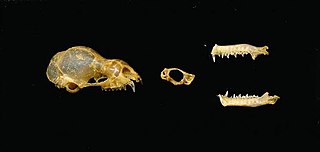 W
WThe ashy roundleaf bat is a species of bat in the family Hipposideridae found in India, Indonesia, Laos, Malaysia, Myanmar, Pakistan, Thailand, and Vietnam.
 W
WThe back-striped weasel, also called the stripe-backed weasel, is a weasel widely distributed in Southeastern Asia. It is listed as Least Concern on the IUCN Red List in view of its presumed large population, occurrence in many protected areas, apparent tolerance to some degree of habitat modification and hunting pressure.
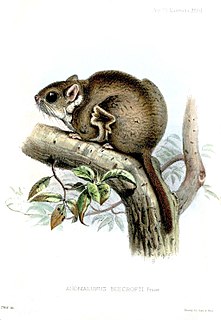 W
WBeecroft's flying squirrel or Beecroft's scaly-tailed squirrel, is a species of rodent in the family Anomaluridae. Some authorities consider it to be monotypic within the genus Anomalurops. Its natural habitats are subtropical or tropical dry forests, subtropical or tropical moist lowland forests, and plantations. It is threatened by habitat destruction but is a common species with a wide range and the International Union for Conservation of Nature has rated its conservation status as being of "least concern".
 W
WThe Caroline flying fox or Pohnpei flying fox is a species of megabat in the genus Pteropus, endemic to Micronesia. Its natural habitat is subtropical or tropical dry forests. Prior to a ban on commercial exploitation, it was hunted for export substantially impacted the abundance. It is threatened by habitat loss due to expanding plantations.
 W
WThe cyclops roundleaf bat or cyclops leaf-nosed bat is a species of bat in the family Hipposideridae found in the forests of equatorial Africa.
 W
WEpixerus ebii, also known as Ebian's palm squirrel, Temminck's giant squirrel, or the western palm squirrel, is a species of rodent in the family Sciuridae. It is the only species in the genus Epixerus, although eastern populations were previously regarded as a separate species, E. wilsoni. It is found in West and Central Africa. Its natural habitat is subtropical or tropical moist lowland forests. It is threatened by habitat loss.
 W
WThe fawn hopping mouse is a rodent native to the central Australian desert. Like all hopping mice it has strong front teeth, a long tail, dark eyes, big ears, well-developed haunches and very long, narrow hind feet. It weighs between 30 and 50 g.
 W
WGundis or comb rats are a group of small, stocky rodents found in Africa. They live in rocky deserts across the northern parts of the continent. The family comprises four living genera and five species, as well as numerous extinct genera and species. They are in the superfamily Ctenodactyloidea. Local people in northern Africa have always known about gundis, however they first came to the notice of western naturalists in Tripoli in 1774, and were given the name gundi mice. While they are not regarded as pests, some people hunt gundis for food.
 W
WHeermann's kangaroo rat is a species of rodent in the family Heteromyidae. Their long smooth pelage resembles typical kangaroo rats, with their dorsal side showing a mixed range of olive, black and orange colors. There are 9 distinguished sub-species of Dipodomys heermanni: D.h. arenae, D.h. berkeleyensis, D.h. dixoni, D.h. goldmani, D.h. heermanni, D.h. jolonensis, D.h.morroensis, D.h. swarthi, and D.h. tularensis. The dental formula of Dipodomys heermanni is 1.0.1.31.0.1.3 × 2 = 20.
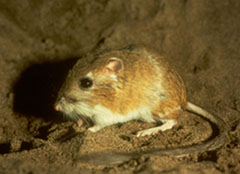 W
WOrd's kangaroo rat is a kangaroo rat native to western North America, specifically the Great Plains and the Great Basin, with its range extending from extreme southern Canada to central Mexico.
 W
WThe Mediterranean horseshoe bat is a species of insectivorous bat in the family Rhinolophidae. It is found in the Mediterranean region and balkan peninsula, as well as parts of Italy.
 W
WPel's pouched bat is a species of sac-winged bat in the family Emballonuridae. It is found in Angola, Cameroon, Republic of the Congo, Democratic Republic of the Congo, Ivory Coast, Equatorial Guinea, Gabon, Ghana, Guinea, Kenya, Liberia, Nigeria, and Uganda. Its natural habitats are subtropical or tropical dry forests and subtropical or tropical moist lowland forests. It is threatened by habitat loss.
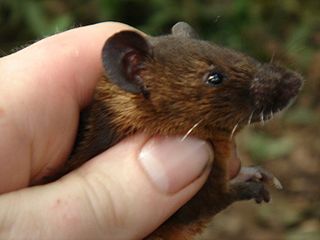 W
WThe rusty-bellied brush-furred rat is a species of rodent in the family Muridae. It is found in Angola, Benin, Cameroon, Central African Republic, Republic of the Congo, Democratic Republic of the Congo, Ivory Coast, Equatorial Guinea, Gabon, Ghana, Guinea, Kenya, Liberia, Nigeria, Sierra Leone, Tanzania, Togo, and Uganda. Its natural habitats are subtropical or tropical moist lowland forests, subtropical or tropical seasonally wet or flooded lowland grassland, arable land, and pastureland.
 W
WThe small flying fox, island flying fox or variable flying fox is a species of flying fox in the family Pteropodidae. It is found in Australia, Cambodia, Indonesia, Malaysia, the Maldives, Myanmar, Papua New Guinea, the Philippines, the Solomon Islands, Thailand, and Vietnam.
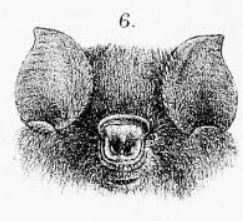 W
WThe sooty roundleaf bat is a species of bat in the family Hipposideridae. It is found in Cameroon, Democratic Republic of the Congo, Ivory Coast, Gabon, Ghana, Guinea, Liberia, Nigeria, Sierra Leone, and Uganda. Its natural habitats are subtropical or tropical moist lowland forests and moist savanna. It is threatened by habitat loss.
 W
WTemminck's mouse is a species of the genus Mus and of the subgenus Nannomys. It is found throughout West Africa, Central Africa, and East Africa. An adult generally weighs 0.006 kg.
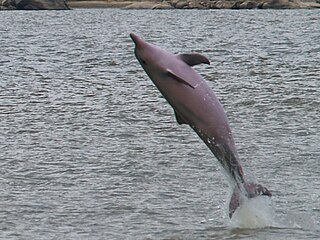 W
WThe tucuxi, alternatively known in Peru bufeo gris or bufeo negro, is a species of freshwater dolphin found in the rivers of the Amazon basin. The word tucuxi is derived from the Tupi language word tuchuchi-ana, and has now been adopted as the species' common name. Despite being found in geographic locations similar to those of 'true' river dolphins such as the boto, the tucuxi is not closely related to them genetically. Instead, it is classed in the oceanic dolphin family (Delphinidae).
 W
WThe white-winged flying fox, also known as the mottle-winged flying fox is a species of bat in the family Pteropodidae. They are endemic to the Philippines. Their natural habitat is subtropical or tropical dry forests. They are threatened by habitat loss. In 2008, Giannini et al. revived the genus Desmalopex and placed D. leucopterus in it.